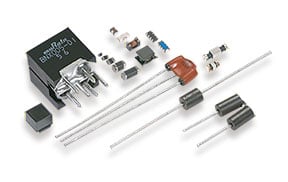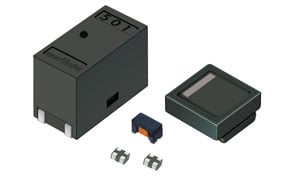Noise Suppression Products / EMI Suppression Filters / ESD Protection Devices
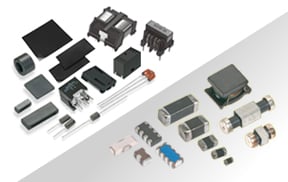
PRODUCT FOCUS
AEI by Dempa Publications, Inc., November 2016
Amid the accelerating incorporation of electronic components in automobiles, noise countermeasures have been becoming increasingly important in order to ensure safety. In addition, with the trend toward lower fuel consumption accompanying environmental regulations, and the advancement of driver assistance systems, the number of electronic control units (ECUs) incorporated in a vehicle has increased, necessitating faster automotive networks. On-vehicle local area network (LAN) cables connected to these ECUs tend to generate jamming radio waves, and are susceptible to the effects of external noise, and therefore, noise countermeasures are indispensable.
In order to address these needs, Murata Manufacturing Co., Ltd. has been endeavoring to develop highly reliable common mode choke coils (CMCCs) that have excellent noise suppression effects (Fig. 1). CMCCs selectively suppress common mode noise through the use of the difference in propagation characteristics depending on mode. Murata Manufacturing has been offering CMCCs for automobiles by making the most of the company’s proprietary winding technology, in addition to magnetic materials technology, and magnetic circuit design technology that it has nurtured in the production of consumer-use CMCCs.

Severe standard for maintaining transmission signal integrity
The incorporation of automotive Ethernet not only in standard-sized passenger cars but also in long trucks and buses must be taken into consideration, and therefore, it is necessary to assume transmission cable length of up to about 15m. In addition, improvements of transmission speeds to accommodate the transmission of non-compressed images from on-board cameras and improvements of response speed by minimizing the frequency of retransmission due to transmission error have been required, as well as standards, have been established.
CMCCs, which are already in wide use, satisfy specification limit values in terms of return loss (Sdd11) and insertion loss (Sdd21). However, the reverse is true in terms of balance (Sds21), and transmission signal integrity can deteriorate (Fig. 2).
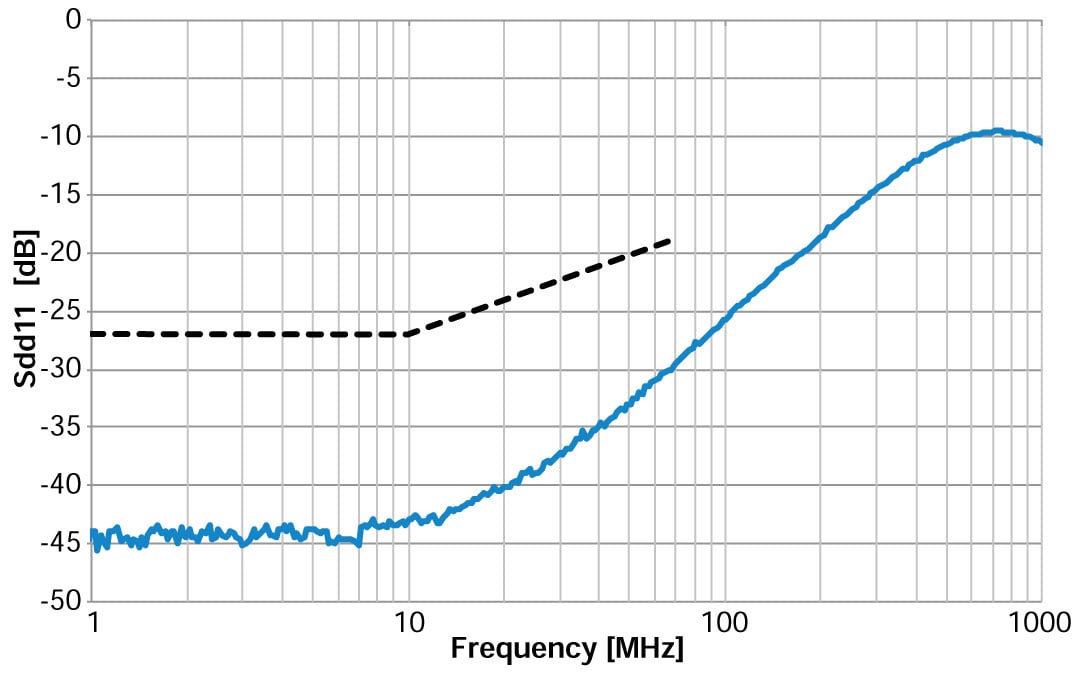
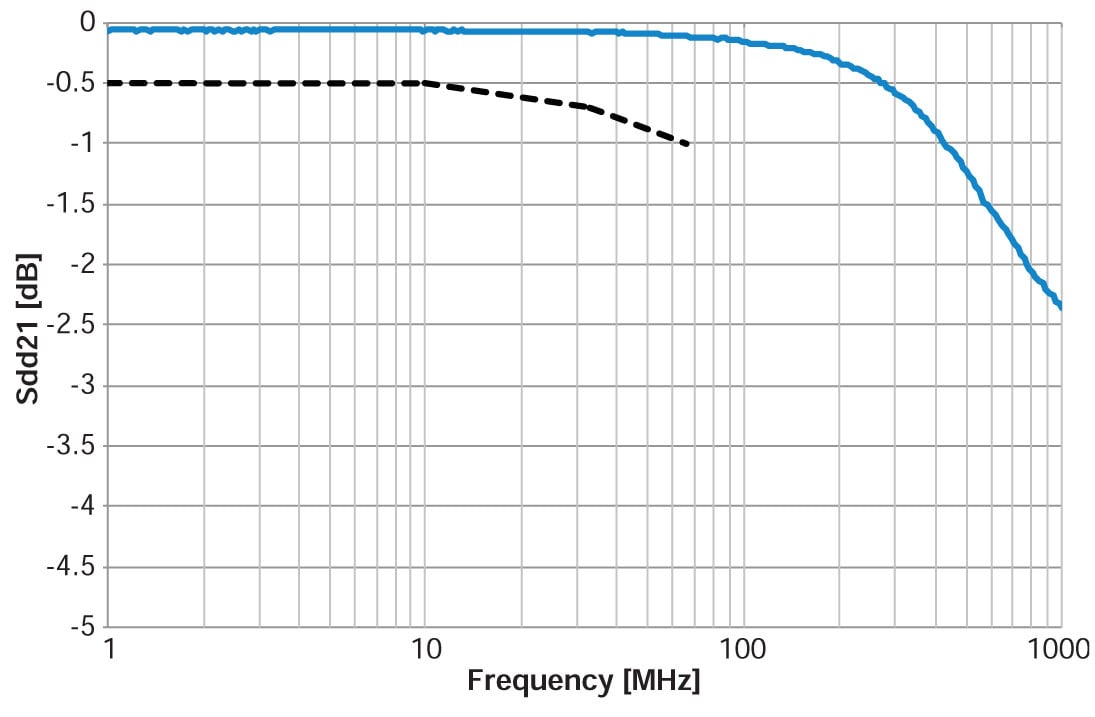
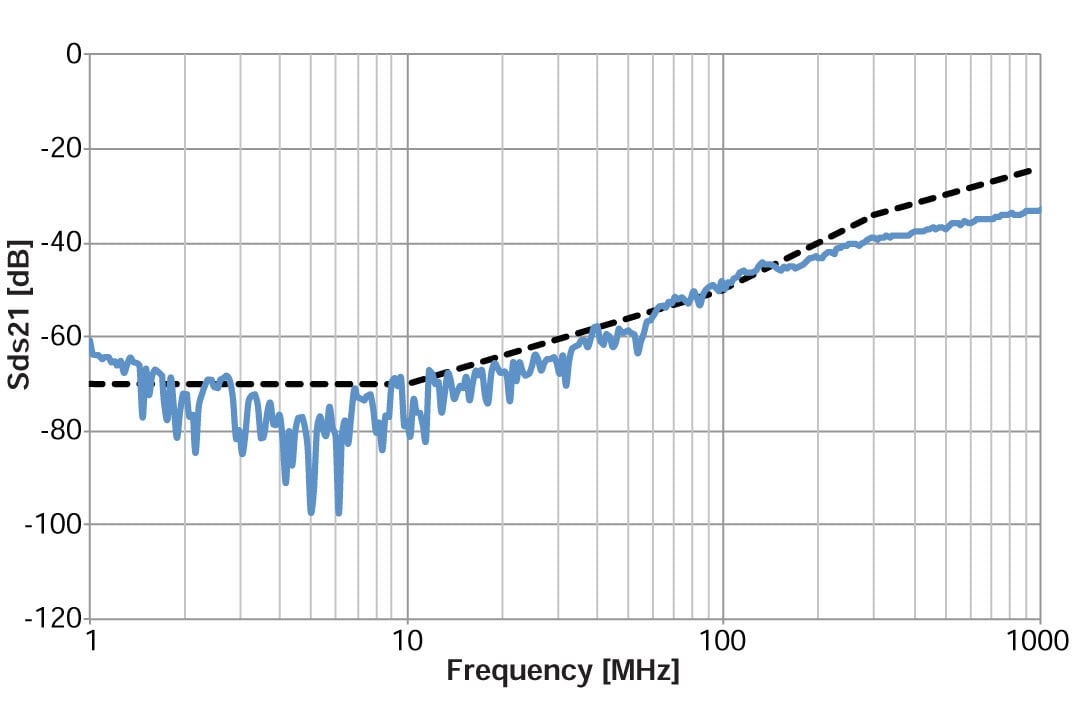
Widely available CMCCs for consumer Ethernet do not satisfy transmission standards for automotive Ethernet.
(Dotted line: Specification limit value, Solid line: CMCC-DLW21SN491XQ)
Noise standard for automobiles (CISPR25), which is far more severe than the standard for general equipment (CISPR220), is applied not only to Ethernet, but also to vehicles wherein many ECUs and information devices are packed in a small space (Fig. 3).
In particular, effects of radio waves to broadcasting waves (AM, FM, TV) and communications equipment compliant with Global Positioning System, 4thgeneration Long Term Evolution, are taken into consideration.
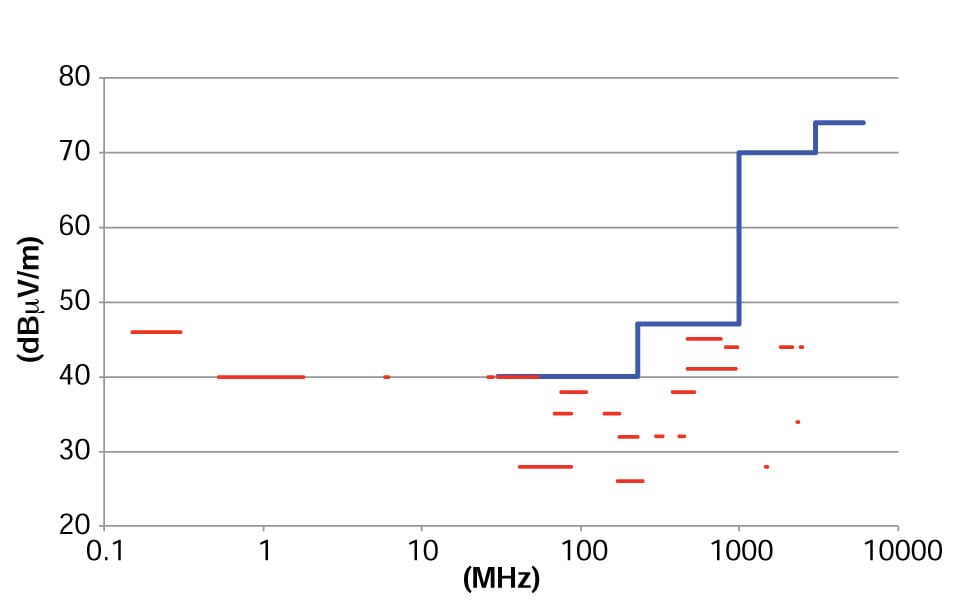
*As measurement conditions differ, simple comparison is not possible. Nonetheless, limit values for automotive electronics themselves are more severe, and measurement distance for automotive electronics (CISPR25) is shorter and more severe at 1m as compared to 3m of consumer electronics (CISPR22).
The limit value of noise elimination characteristics (Scc21) of the CMCC standard for automotive Ethernet has been set with consideration given to the noise standards for automobiles. Widely available CMCCs for consumer Ethernet cannot satisfy the CMCC standard for automotive Ethernet.
The problem of electromagnetic compatibility (EMC) needs to be overcome using exclusive CMCCs with higher performance in terms of both transmission characteristics and noise elimination characteristics (Fig. 4).
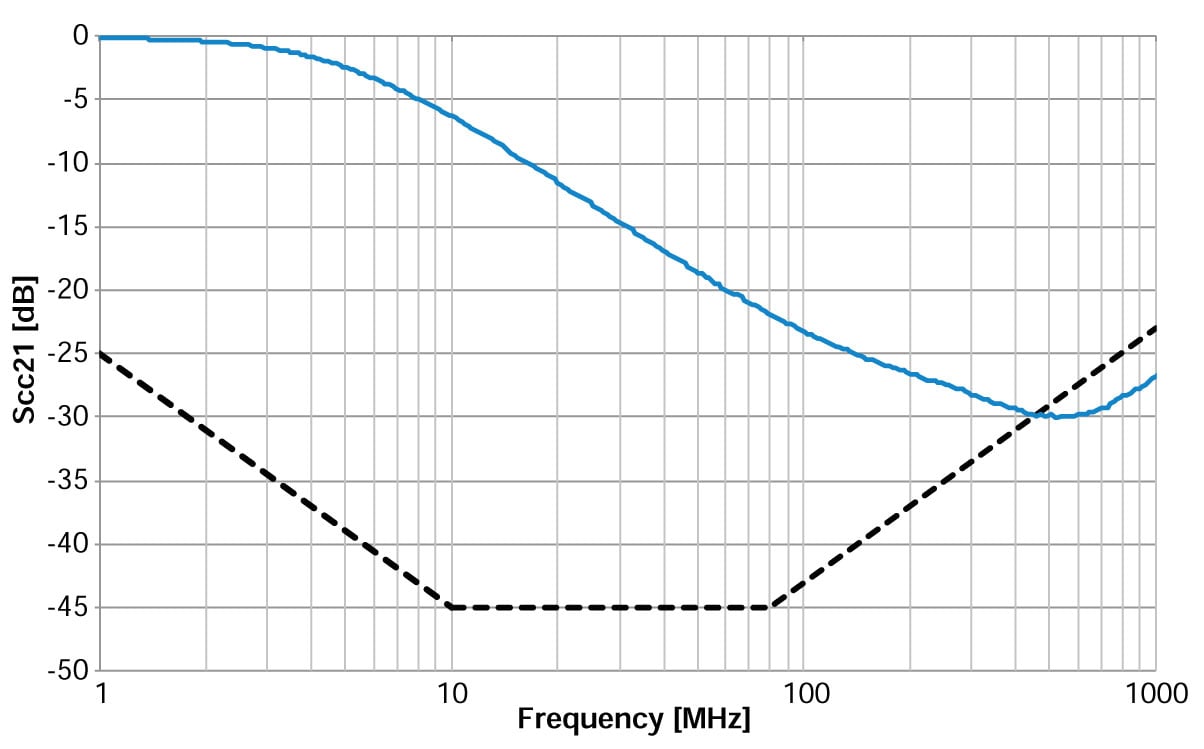
CMCCs for consumer Ethernet that are in wide use cannot satisfy noise elimination characteristics standard for automotive Ethernet. (Dotted line: Standard limit value, Solid line: Consumer-use CMCC-DL-W21SN491XQ)
The DLW43MH Series CMCCs from Murata Manufacturing are compliant with BroadR-Reach®, which has the largest potential for widespread use among automotive Ethernet standards. It has achieved high insertion loss characteristics through Murata’s proprietary ferrite material technology and minute mode conversion characteristics through advanced winding technology.
Thus, the DLW43MH Series exhibits high noise suppression effects and high immunity performance that satisfy the automotive Ethernet standard (Fig. 5).
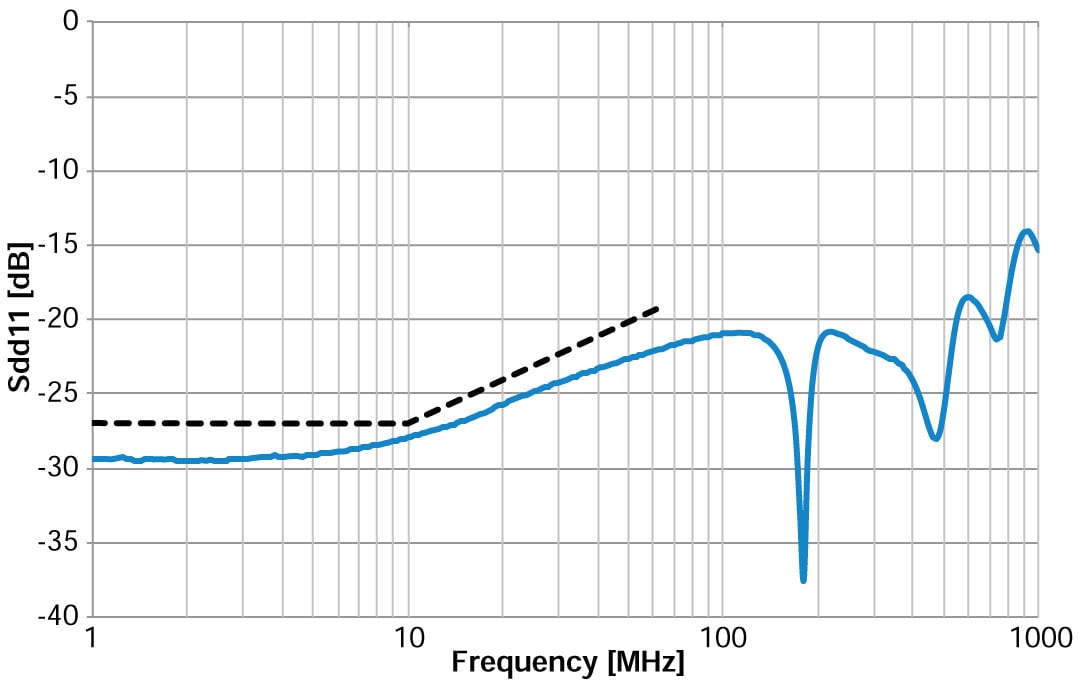
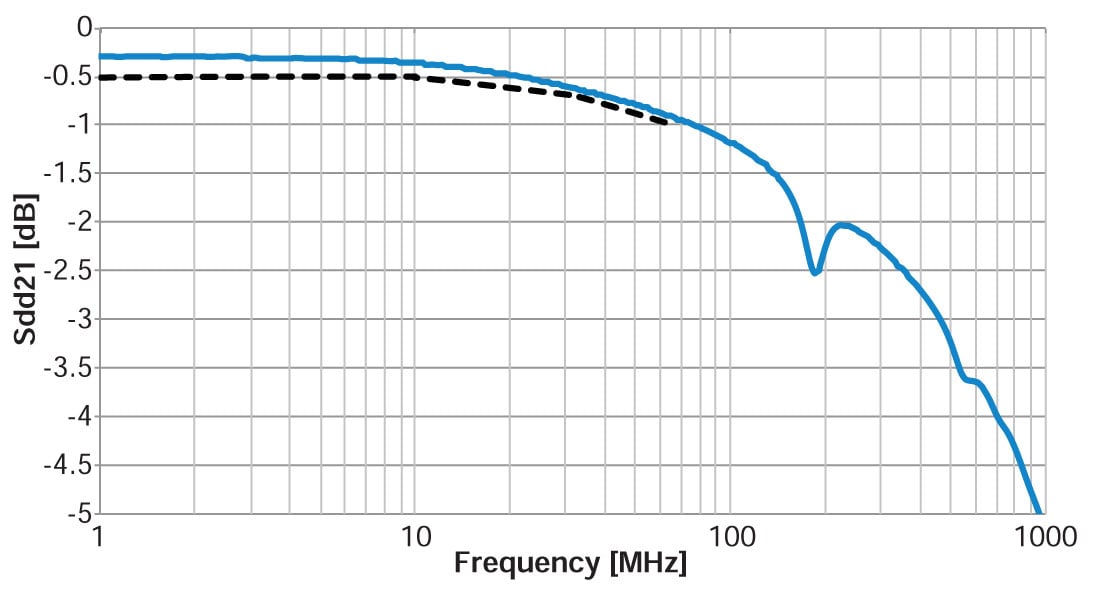
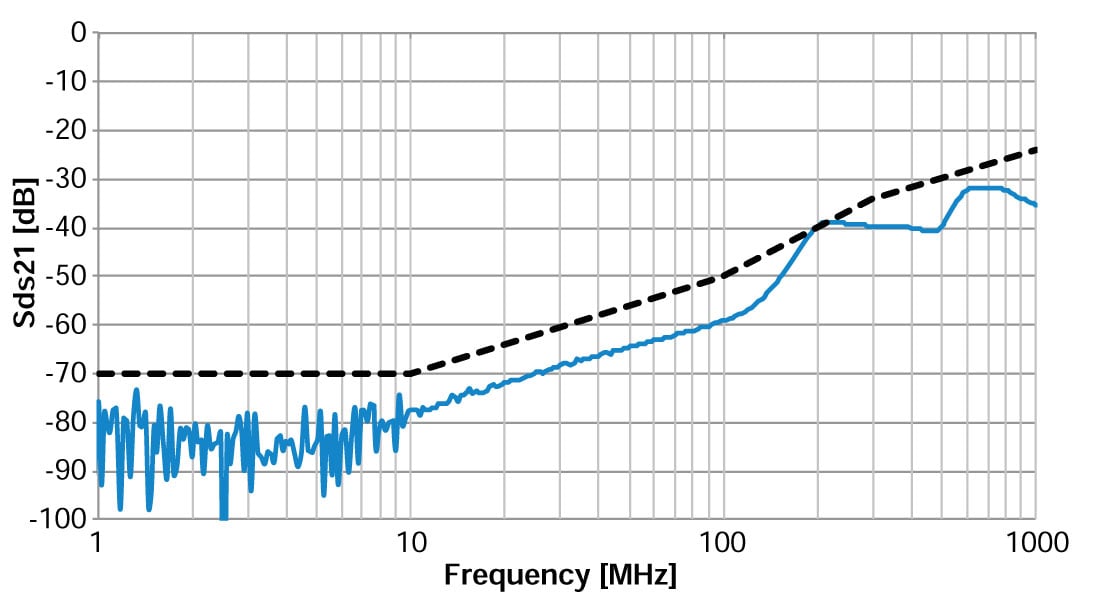
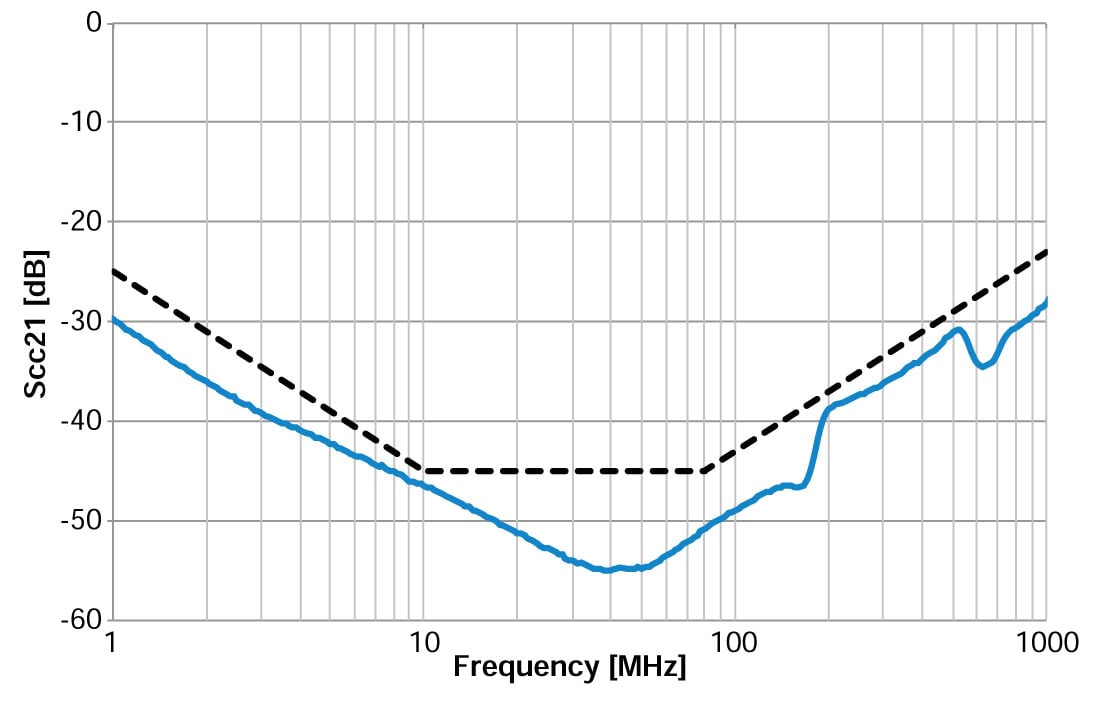

A concrete sample circuit using DLW43MH is shown (Figs. 6 and 7). It is sometimes used together with an LC filter.
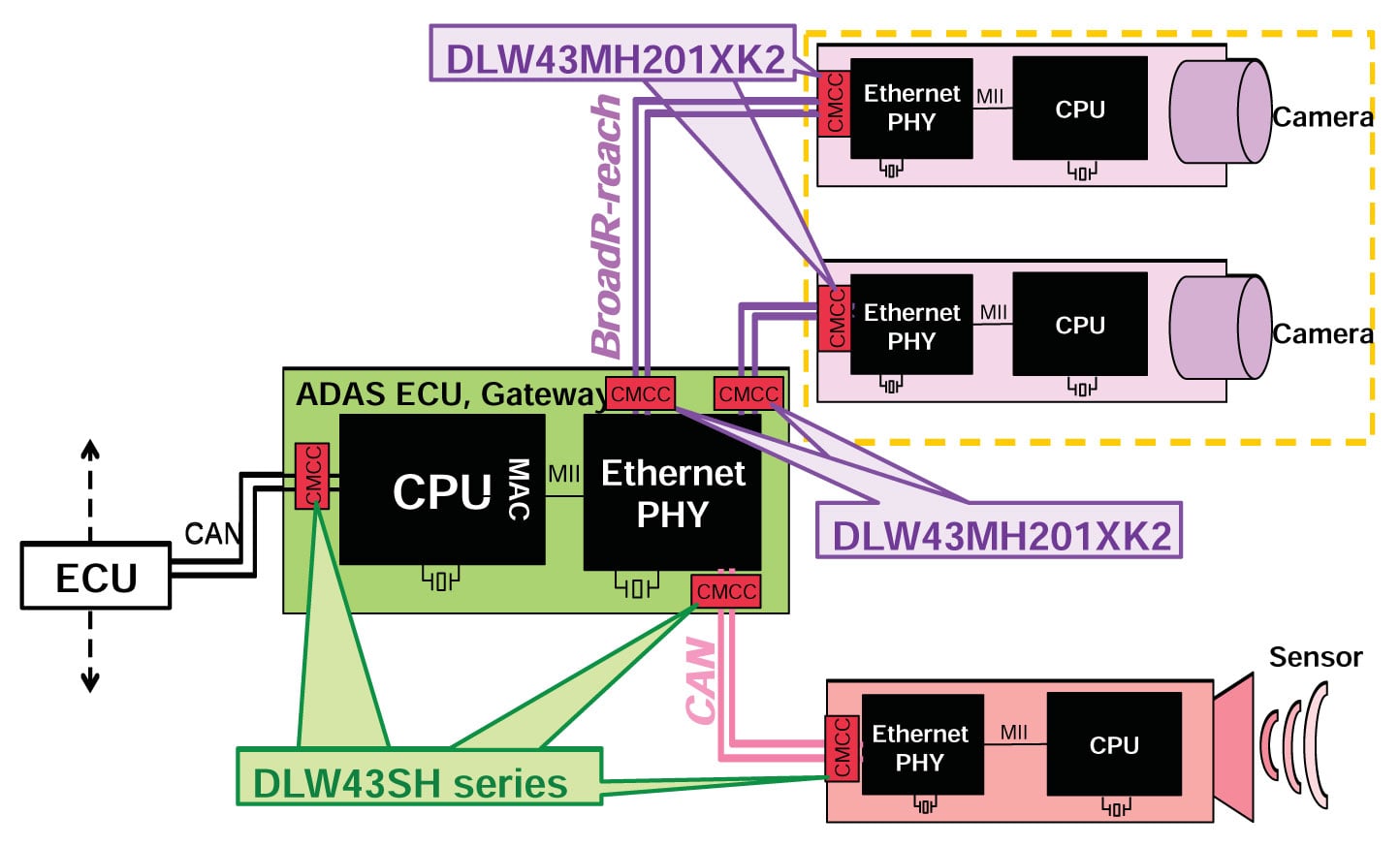
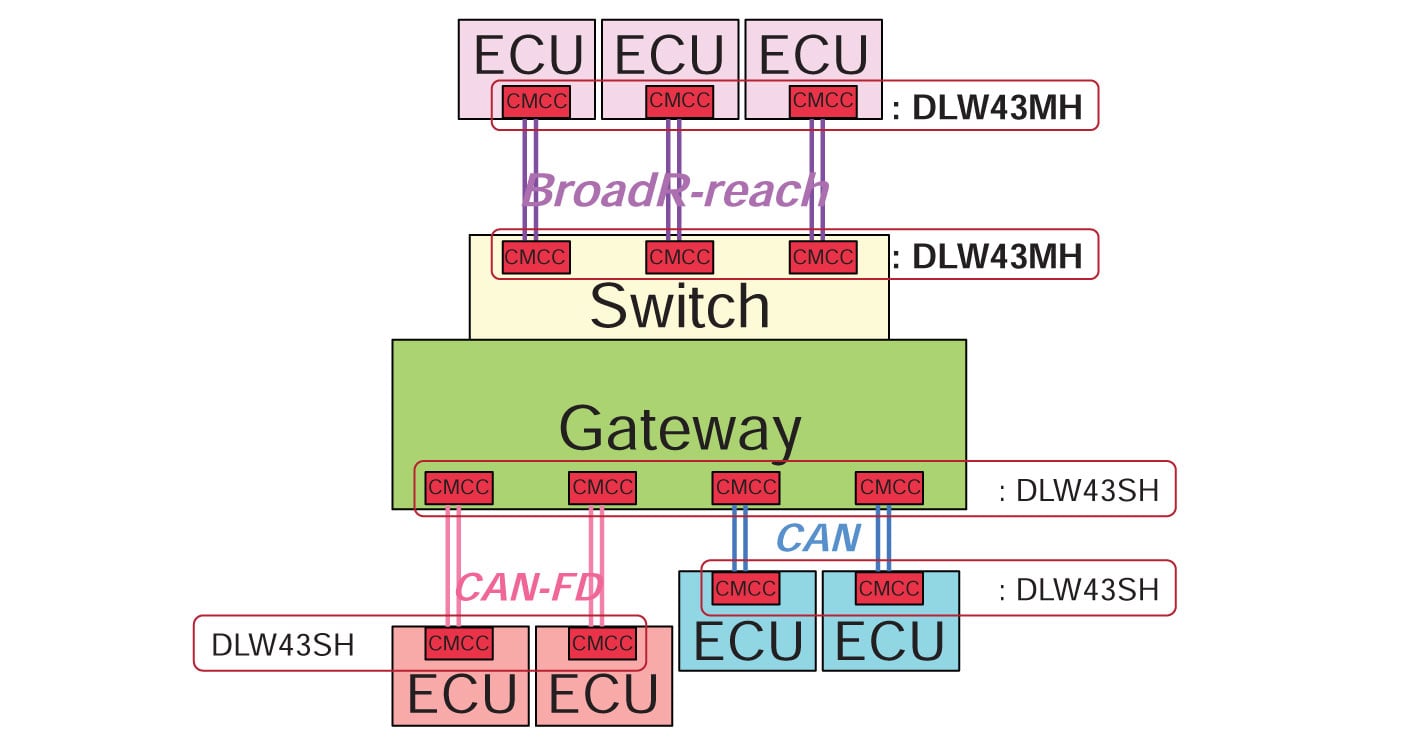
BroadR-Reach® has a potential for growing into a network standard indispensable for autonomous driving through the expansion of its use in on-board diagnostics, on-board camera systems, infotainment devices, to gateway that connects these devices, and furthermore to power trains and safety devices. Murata intends to further advance the development of CMCCs for automotive Ethernet that meet various noise countermeasure needs, including miniaturization, hightemperature resistance, accommodation to high-speed transmission, and higher reliability, and at the same time, make efforts to enrich the lineup of other magnetic components as well.
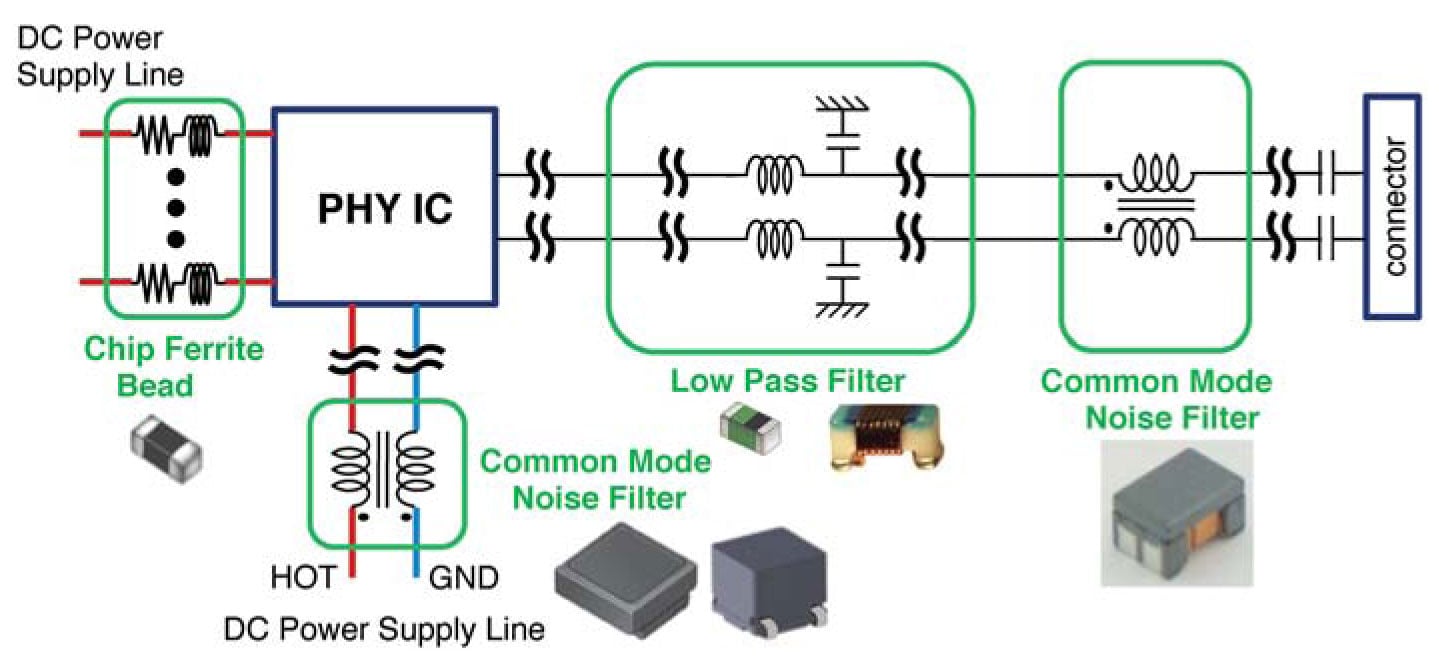
Note:
BroadR-Reach® is an automotive Ethernet standard defi ned by the OPEN Alliance, and allows multiple in-vehicle applications, such as advanced driver assistance systems and infotainment systems to access information simultaneously over a single unshielded twisted pair cable, reducing cabling cost and weight as cars become ever more connected. BroadR-Reach is a registered trademark of Broadcom Corporation.
About This Article:
The author is Noriyoshi Yagyu from the Production Engineering Section 2, Product Engineering Department, EMI Filter Division, Murata Manufacturing Co., Ltd.

